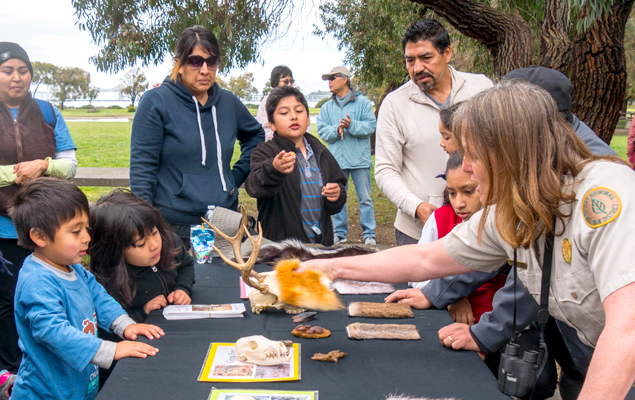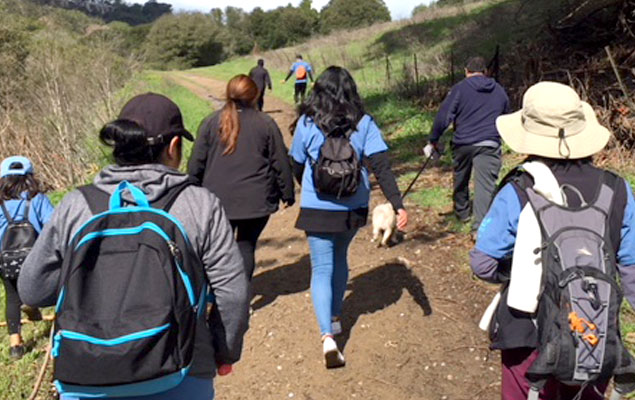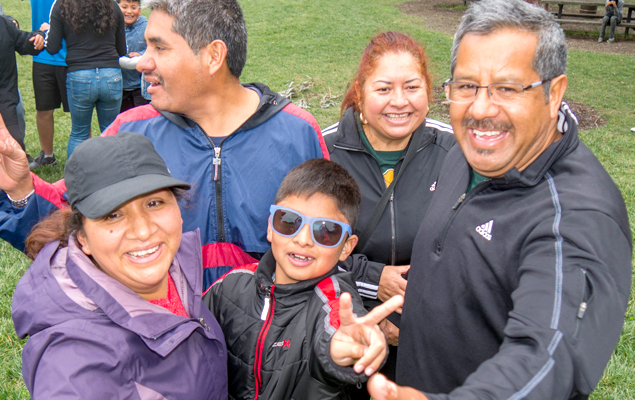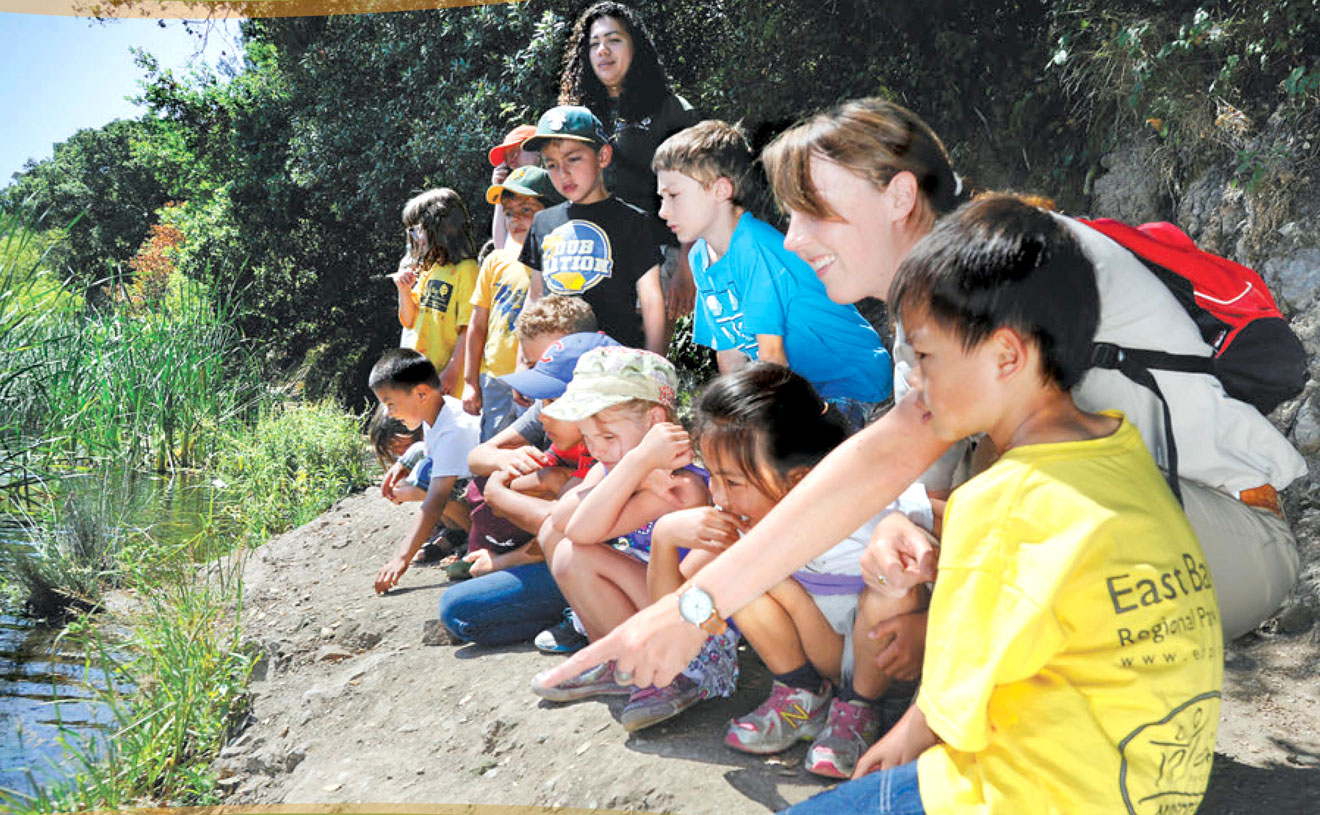
Regional parks elevate quality of life for Bay Area Hispanics
Measuring the real impact that an organization and its programs have on a community can be difficult. Well-intentioned community outreach can often generate results that don’t make a real or lasting difference in people’s lives.
The Hispanic community is one that’s a priority for government agencies, non-profits, and corporate marketers. The programs that stand out are those sincere efforts based on an understanding of the Hispanic community and its needs and preferences.
Here in the San Francisco Bay Area, the East Bay Regional Park District (EBRPD) has a big mission and responsibility that affects millions of residents and tourists (a total of 25 million park district visitors in 2018). Tracking the results of their programs and services that target and benefit the Hispanic community, I see that the community impact can be measured by several things easily observed:
- the number of program participants (community response)
- new partnerships the district has formed with Hispanic community groups
- the personal results that program participants and other park visitors have related to park administrators and news media
By these and other metrics, EBRPD has set an example of community engagement based on community needs. Supporting the district’s community programs and other initiatives is the Regional Parks Foundation. Celebrating its 50th anniversary this year, the foundation is a 501(c)(3) organization that supports EBRPD through fundraising to provide universal access, environmental stewardship, educational and recreational programs and the acquisition of parklands. Fully engaged with the Bay Area community, the foundation raised $2,763,603 last year, a 36% increase over the budgeted goal. The foundation believes that connections with nature are critical for leading a healthy life, and it strives to ensure underserved populations have equal access to nature through the district's parks, trails, programs and services.
“We are grateful for the support of the community,” said Juliana Schirmer, Foundation Development Director. “Our 50th celebration is a celebration of success and we are looking forward to growing these programs”.

My extensive experience with East Bay parks was beautifully summarized by my recent attendance to one of the district’s Multicultural Wellness Walks, which have received a strong response from the Hispanic community. The wellness walk was an educational and heart-warming group experience that I enjoyed in many ways. More than a guided nature walk, it was an exercise in natural living and community connection. I took special note of the kids who were listening closely to the naturalist guide and asking him questions.
EBRPD’s Public Affairs Director, Mona Koh, organizes and leads the wellness walks. She pointed out that she’s been able to watch many kids grow over the years of their family’s participation with the wellness walks and other programs. Koh has come to know many of the kids and parents, with whom she enjoys practicing her Spanish.
These Hispanic kids are growing up with the park programs, which are clearly fostering an enduring love and appreciation for public parks and nature in general. EBRPD’s programs have inspired community leaders and parents, who in turn inspire and engage the children who will become the future administrators and caretakers of the parks. Inspiring new generations is one of the most important and lasting impacts that I see for the Hispanic community and the overall community.
Witnessing the district’s outreach to the Hispanic community for the last fifteen years, I see the community impact in the following ways:
Health and Wellness
The Hispanic community lives with significant health challenges that are largely a result of lifestyle. The personal, financial, and societal costs are huge. A healthier lifestyle that includes both dynamic and relaxing activities in nature is key to reducing the high rates of conditions such as obesity, hypertension, type 2 diabetes, and stress-related ailments. The Multicultural Wellness Walk I attended recently is a fantastic way to help people adopt new, healthy lifestyle habits that are also enjoyable aspects of their social interaction.
Since 2012, the park district has organized six Multicultural Wellness Walks annually. Co-sponsored by the Regional Parks Foundation and Kaiser Permanente, each walk attracts an average of 140 participants, ages two to eighty-plus. They represent the diverse communities in Alameda and Contra Costa counties. The walk provides the opportunity to connect with other families and to make new friends from other ethnic groups.
Eighty-five percent of attendees report that they feel relaxed and connected to nature after the walks, and seventy percent reporting they have interacted with people from another culture.
“I have a passion for walking, being outdoors and finding ways to be healthy,” said Eugenia Araque, community leader of the Latina Center, a growing community group that has partnered with EBRPD.
Ayde Talavera, a 62 year old pre-school teacher from San Pablo, also credits the program with life changing results. “It’s given me and so many so much,” said Talavera. “Better mood, more energy, and more stamina,” she adds.
Since 2012, the Regional Parks Foundation has proudly supported the Healthy Parks, Healthy People Bay Area Initiative with programs such as Trails Challenge, Kids Healthy Outdoors Challenge, Parks RX, and its newest program, SHINE (Stay Healthy In Nature Every Day).

Community Connection
Beyond the health benefits of outdoor activity, the goal of the wellness walks is to create a communal experience of walking together in the parks as well as to build bridges of cultural understanding and appreciation across cultures. These events are so much more than just a walk in the park. Seeing a large and diverse group of ‘strangers’ share a morning of outdoor activity and learning was for me a great display of community.
“These walks have done wonders to bring together the community,” said Mona Koh, EBRPD’s Public Affairs Director. “It takes a lot of wonderful people to make this happen and it takes even more efforts to ensure we have beautiful places to come and enjoy.”
As a result of participating in the Multicultural Wellness Walks, many of the participants have joined in conservation efforts to repair and maintain the trails they hike on. It’s an example of the deeper engagement the district has fostered.
“In the 30 years I have been in California, I have never felt more alive and appreciative of the spiritual connection we can have with nature and people,” said Talavera. “Everyone’s on social media these days and rarely do people talk anymore. I say put down your phones sometimes and think about what really matters. This program has helped me and I know it can help others.”
Youth Development
Youth Development programs, also known as “Campership,” support under-resourced children and youth. Campership gives children the opportunity to attend camp, experience parks, learn through award winning environmental education programs and gain skills through employment.
Key Campership initiatives include: Park’n It Day Camp, Camp Arroyo, swimming lessons and scholarships for junior lifeguards, Ash Street Day Camp, Teen Eco Action Week, and youth job fairs.
In 2018, the Foundation’s youth initiatives also included the Adventure Crew program, which immerses Richmond youth ages 10-13 in nature through a variety of outdoor recreation and educational activities. Nearly 9,500 youth attended environmental education programs last year.

Gratitude Expressed
The people who are most grateful for our regional parks tend to be the most engaged and frequent visitors to the district’s parks and facilities.
Alicia Cruz is a regional coordinator for Latino Outdoors, an organization that connects the Latino community with organizations such as the East Bay Regional Parks District, and organizes guided walks and other activities.
“It's extremely valuable for me to have a place where I can breathe better and completely express physically, mentally and spiritually,” says Cruz. “I work in an office nine hours a day in a very demanding space. My well-being easily gets out of balance and I forget to practice self-care. Accessing a park near me instantly puts me back in a relaxing state. It truly is my healing place!”
When Berkeley resident Sandra Martinez takes her daily walk around Lake Temescal, it’s with a sense of gratitude. She’s grateful she has her health and two strong legs and, as an East Bay resident, very grateful to have beautiful trails on which to walk and explore.
“Lake Temescal is one of my favorite places to walk,” says Martinez. “The lake is gorgeous, the park is always nicely maintained and I feel safe here. Now if you’ll excuse me,” she says adjusting her visor, “I have a sunset to catch.”

